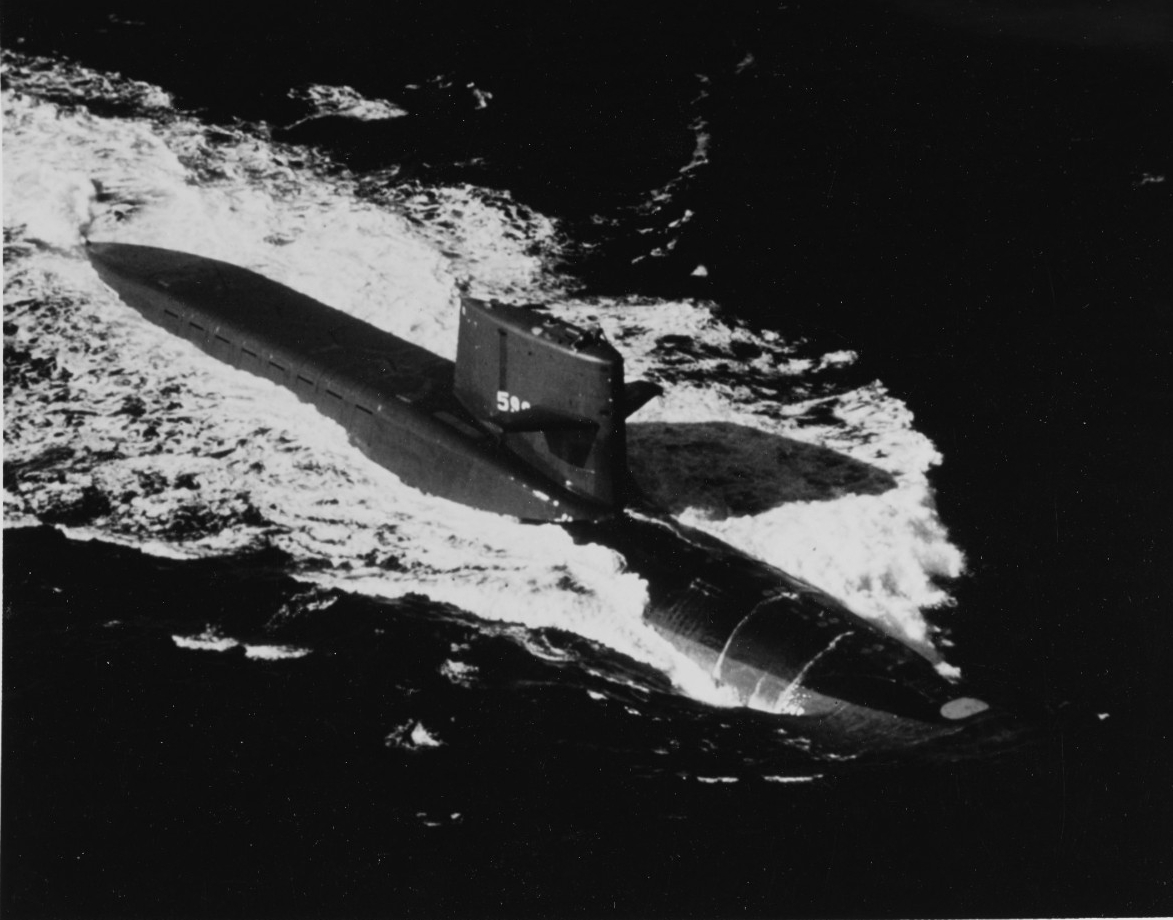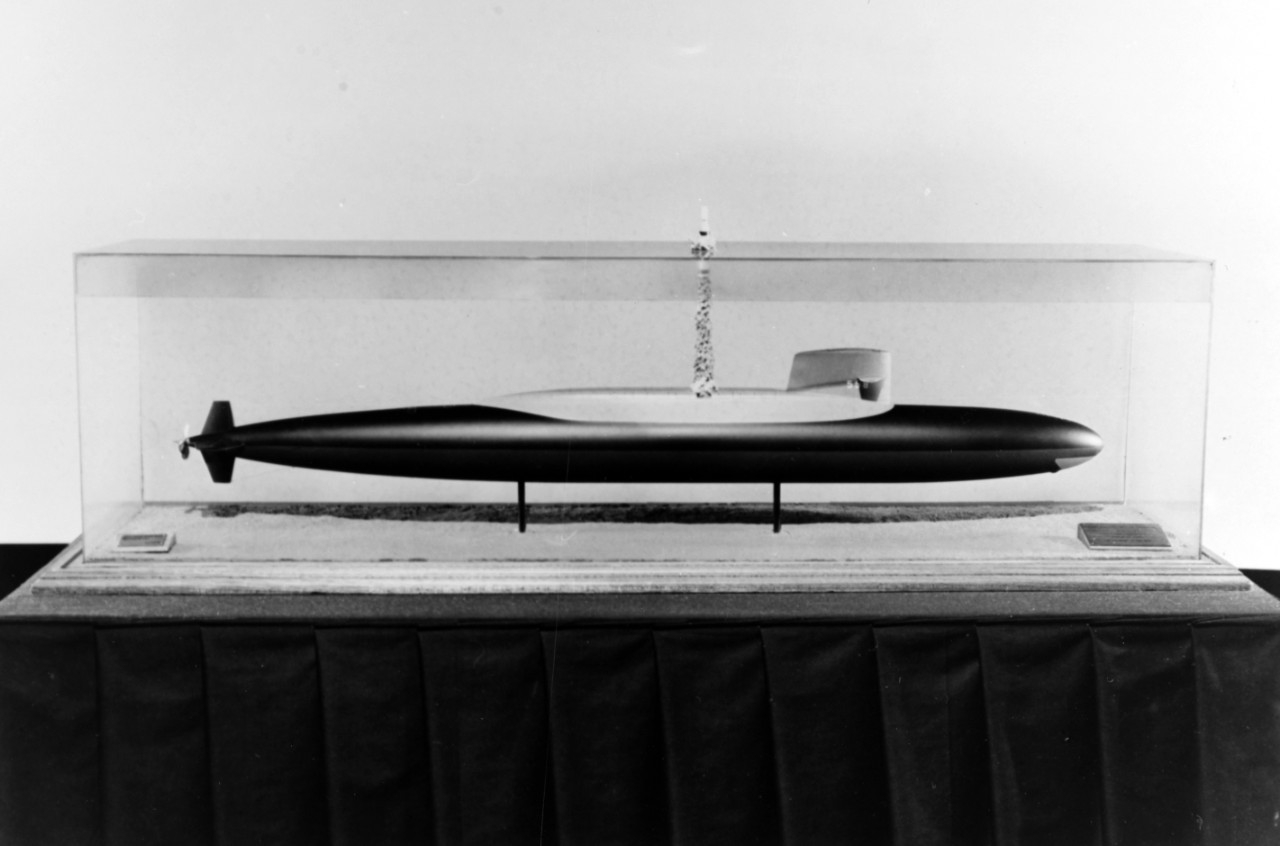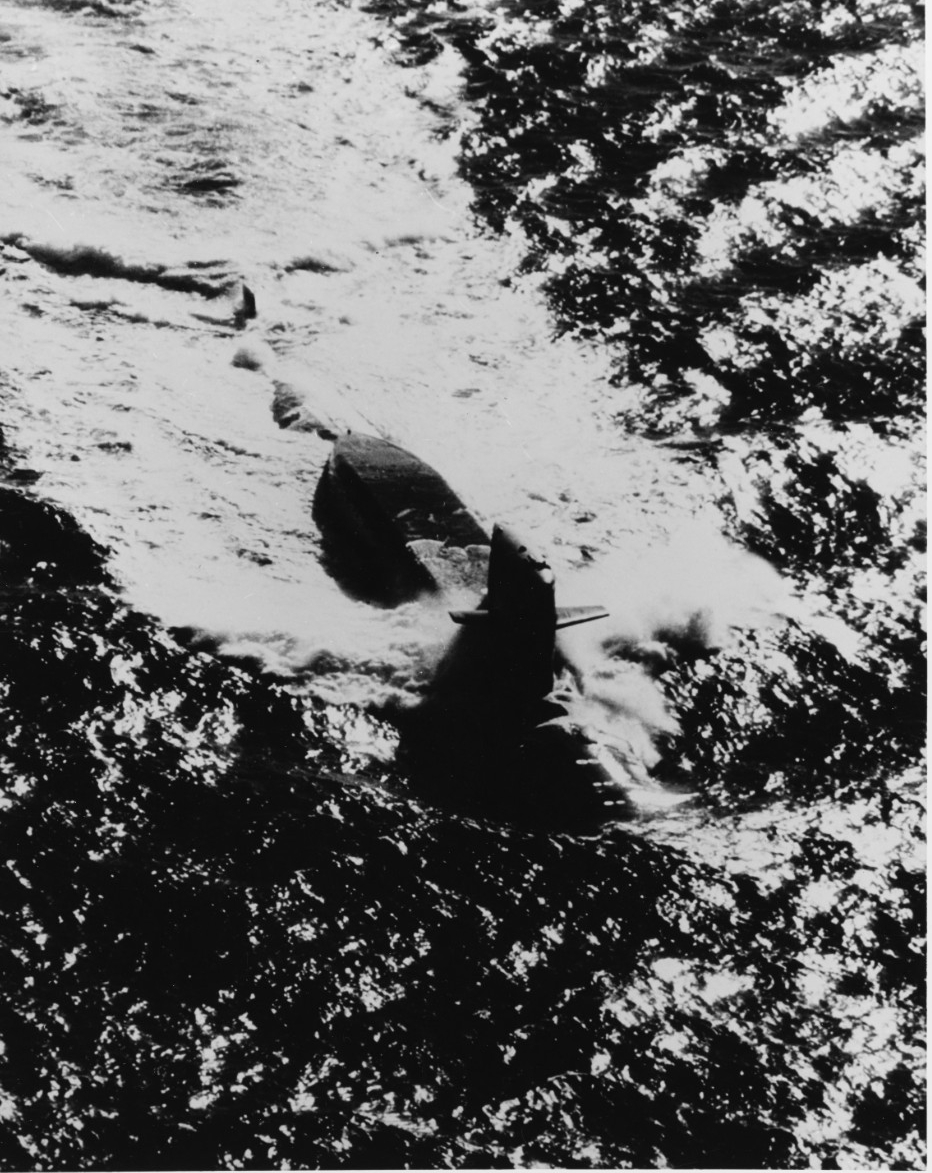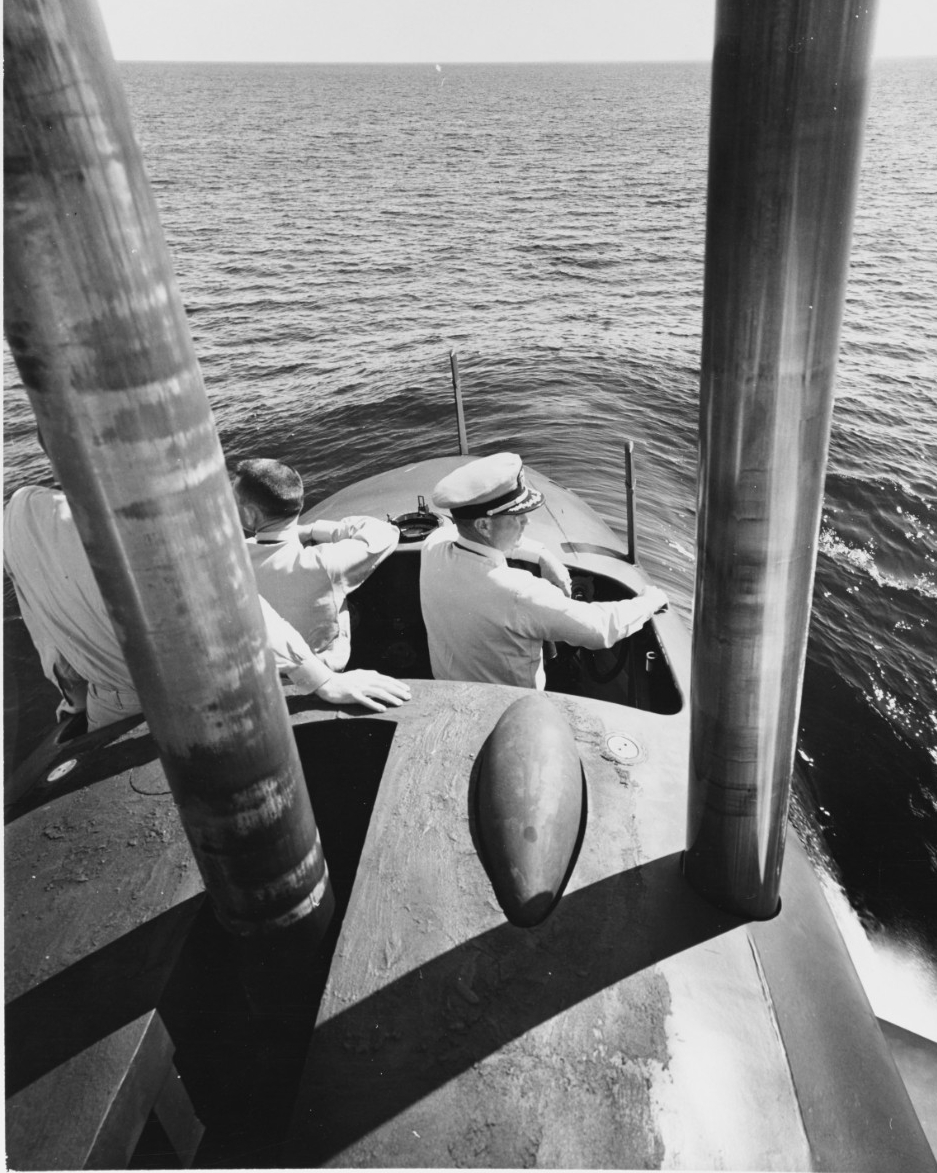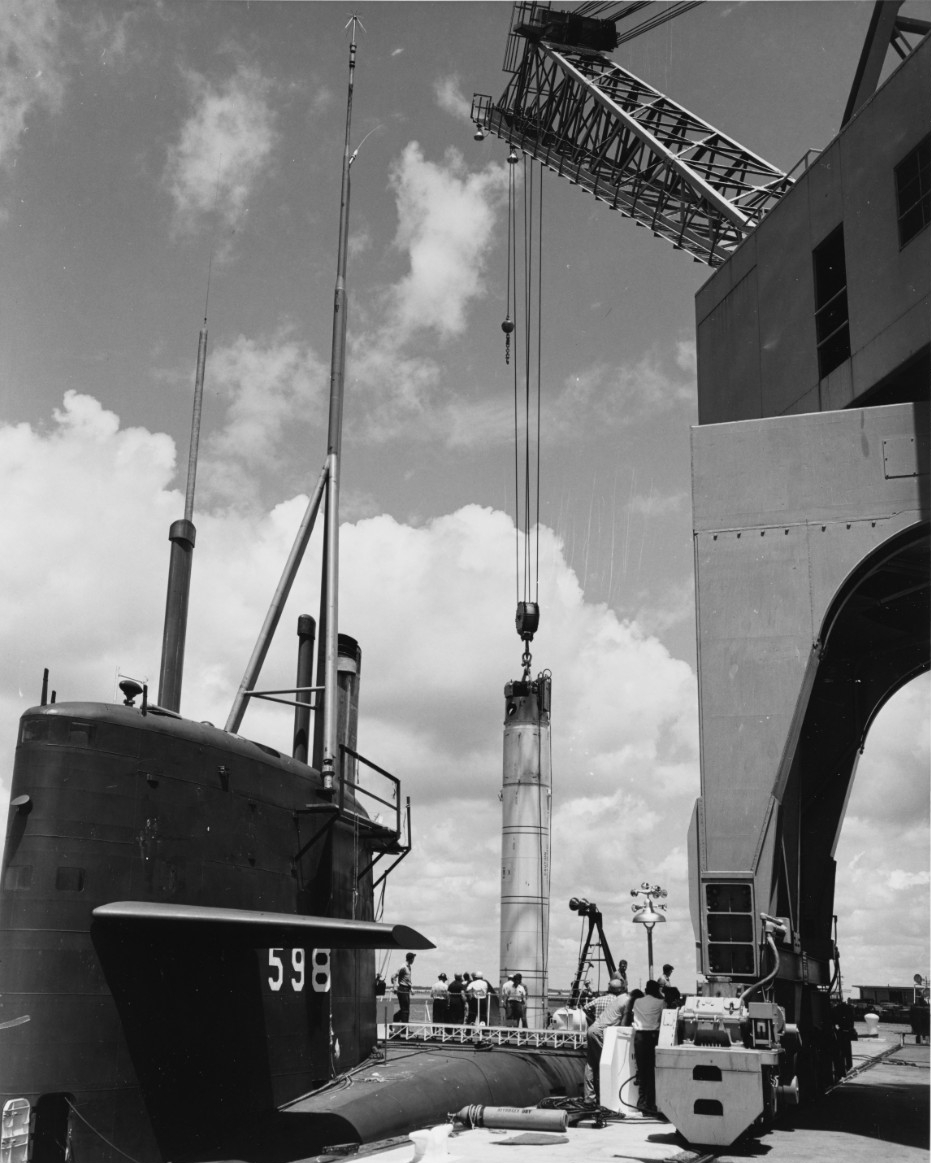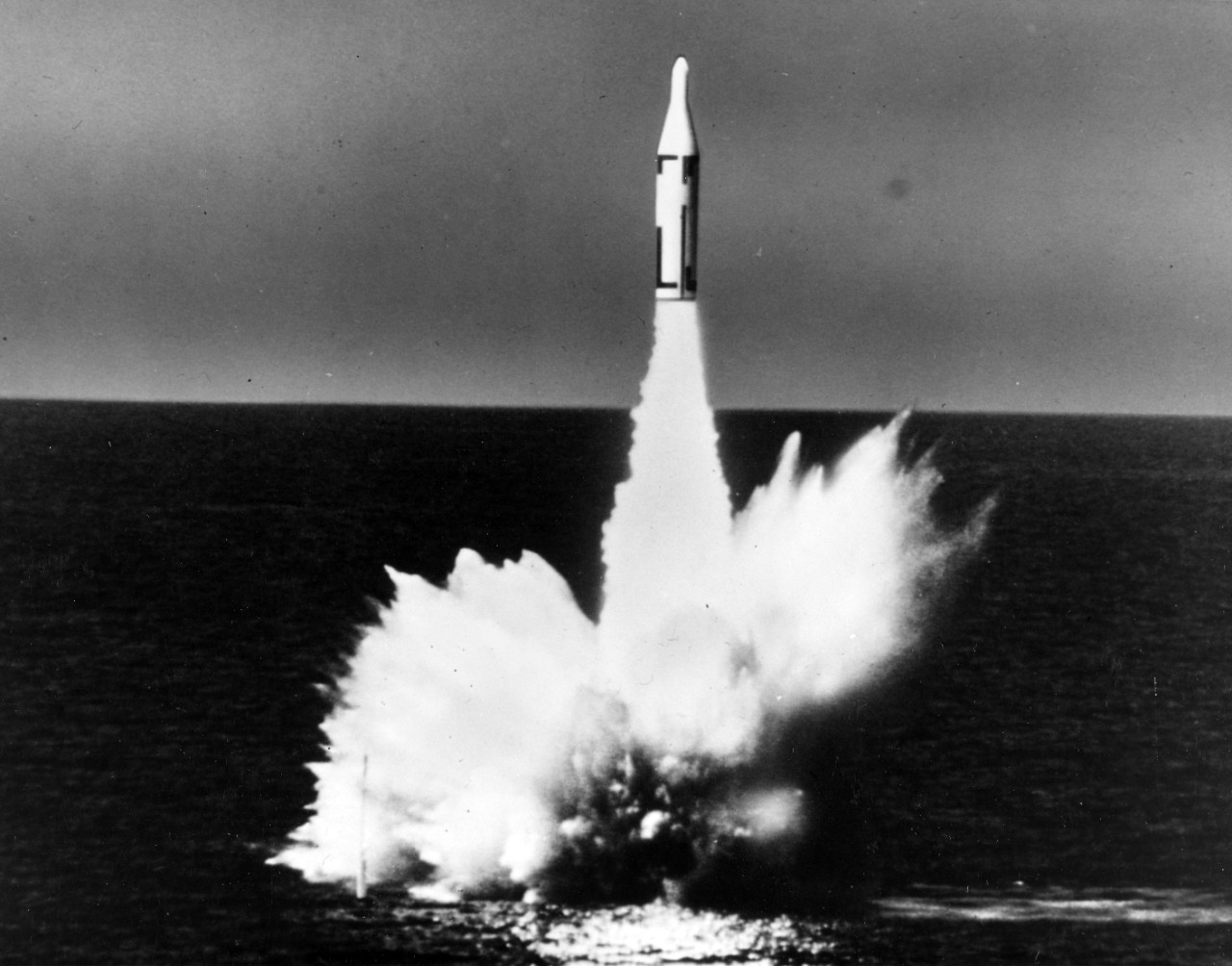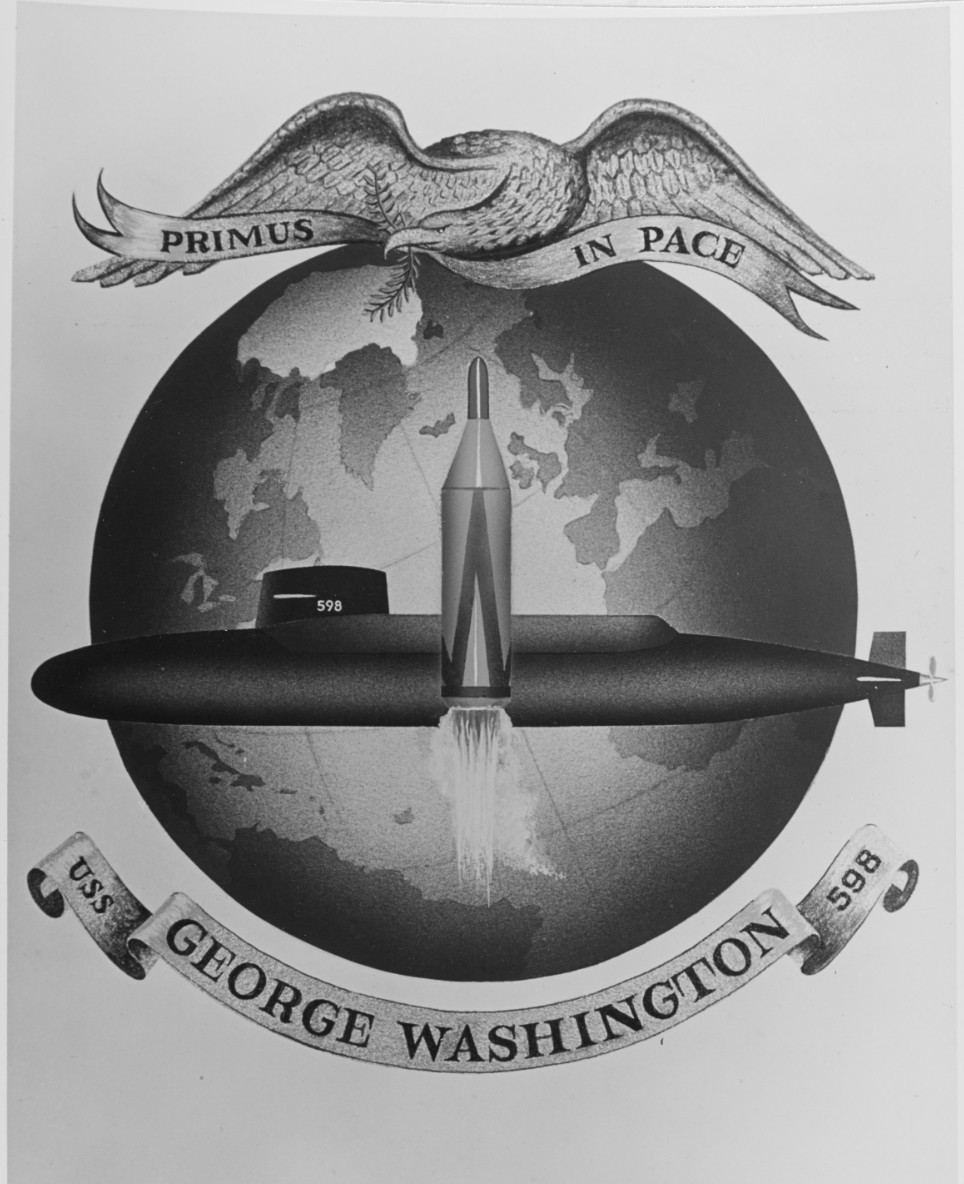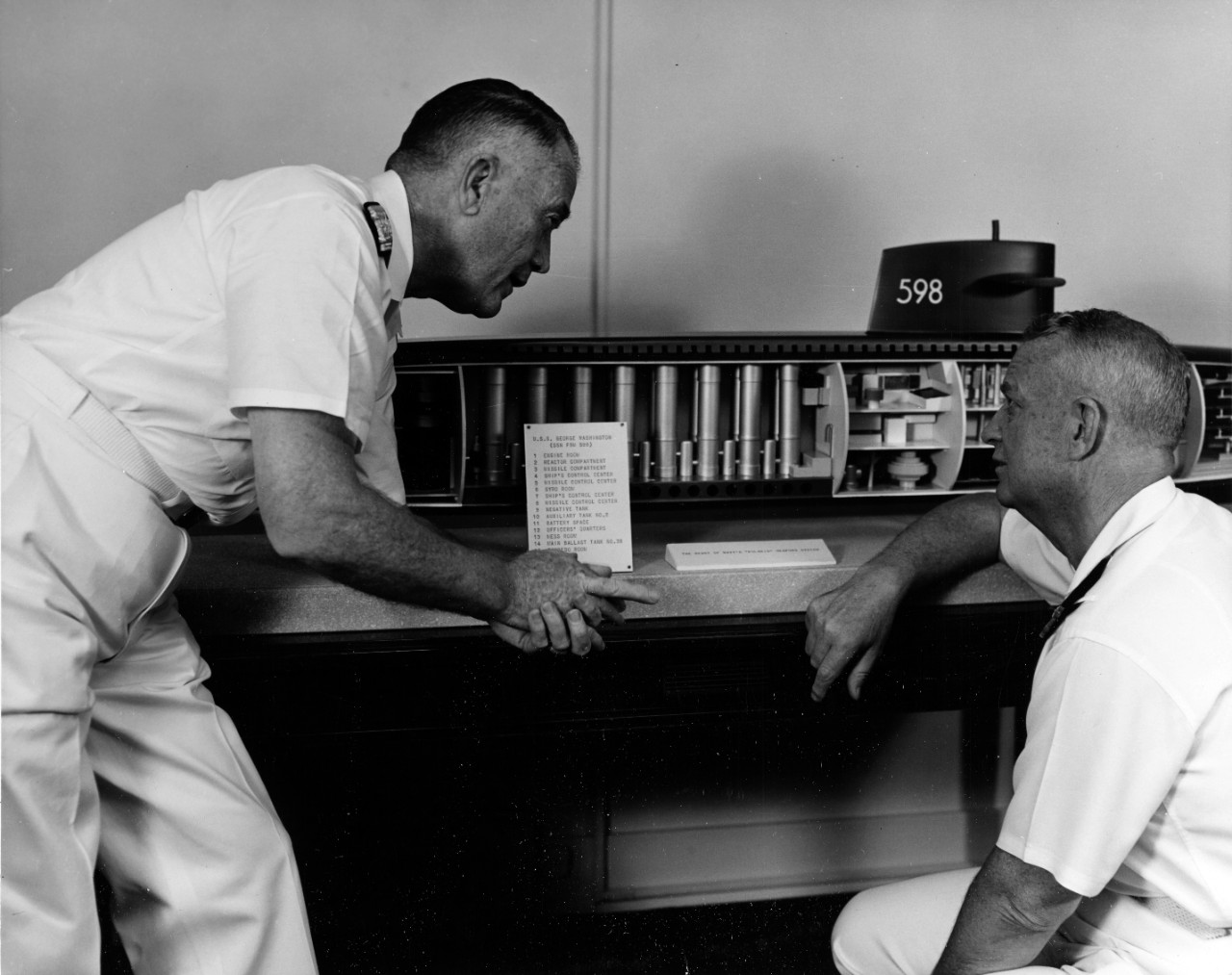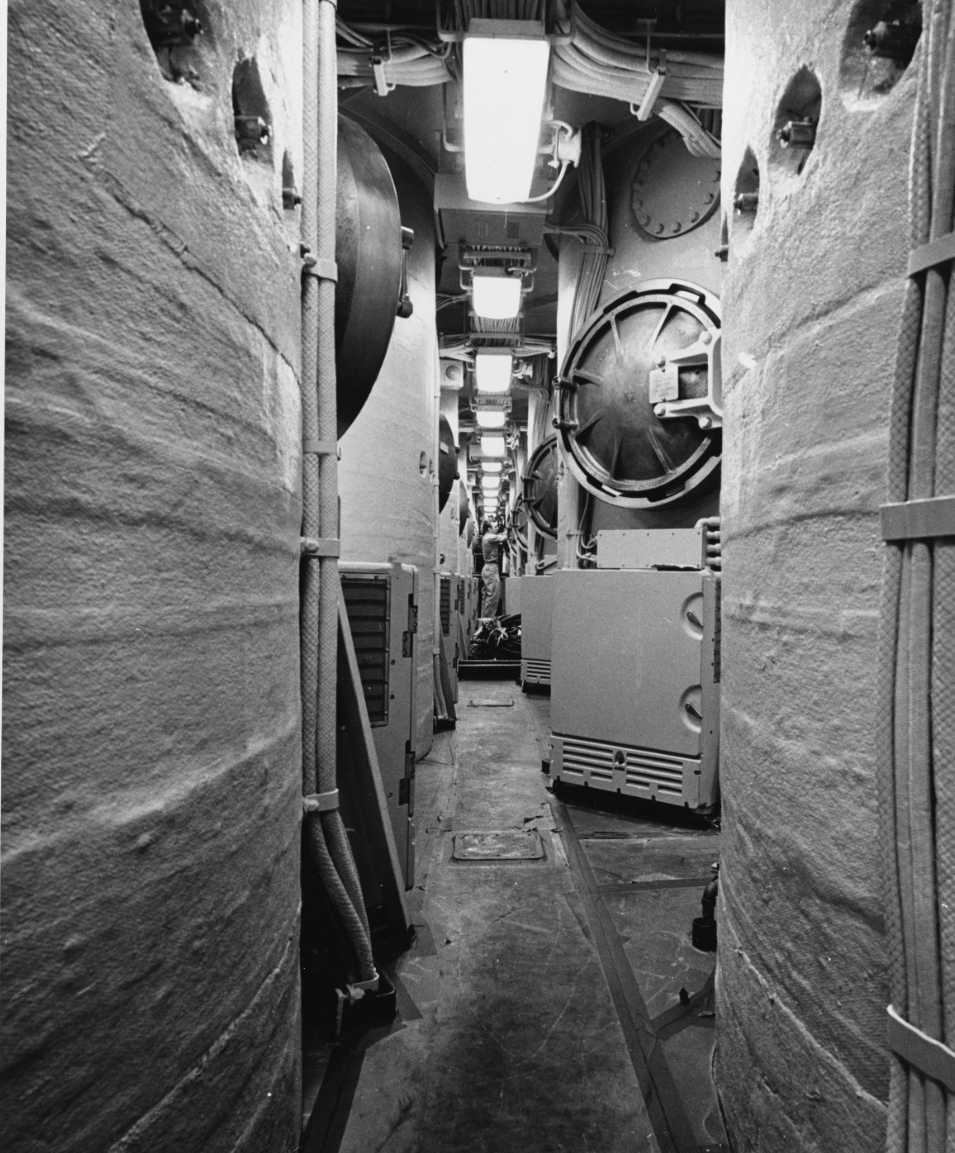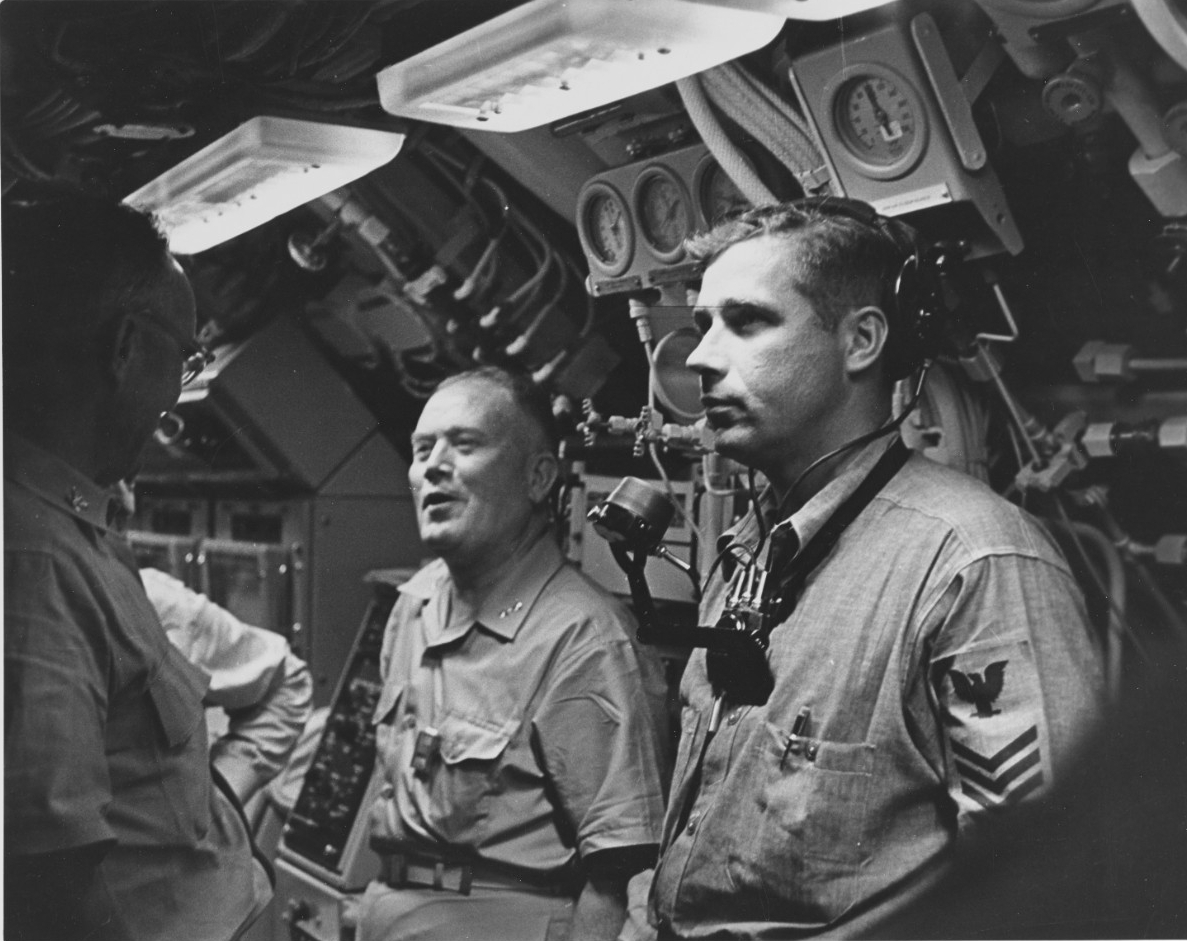USS George Washington (SSBN-598)
Named in honor of the commander in chief of the Continental Army and the first president of the United States, USS George Washington (SSBN-598) was commissioned 30 December 1959 at Groton, Connecticut, as the first in class of nuclear-powered ballistic missile submarines.
On 28 June 1960, George Washington steamed to Cape Canaveral, Florida, where the boat loaded two propellant Polaris missiles. While standing out in the Atlantic Missile Test Range on 20 July 1960—with head of the Polaris program Rear Admiral William F. Raborn onboard—George Washington made history when she successfully launched the first Polaris from a submerged submarine. At the completion of the successful launch, the boat’s commanding officer, Commander James Osborn, sent President Dwight D. Eisenhower the message, “Polaris from out of the deep to target. Perfect.” About two hours later, the submarine deployed a second Polaris that smashed into an impact area some 1,100 miles downrange.
After launching the Polaris missiles, George Washington returned to Cape Canaveral and embarked her gold crew. On 30 July 1960, the new crew duplicated earlier successes by launching two more Polaris missiles while submerged. Shakedown for the gold crew ended at Groton on 30 August, and the boat was underway about two months later headed for Charleston, South Carolina, to load her full complement of 16 Polaris missiles. While there, George Washington received the Navy Unit Commendation.
After completing the historic launches, George Washington began her first patrol. During the maiden voyage, the submarine ran submerged 66 days before returning to Groton where the gold crew assumed responsibility of the boat’s second patrol. At the completion of the second patrol, George Washington made way to Holy Loch, Scotland, in April 1961. For the next few years, the submarine conducted classified deterrent patrols near the Soviet coastline, rotating the two crews. Four years after her departure from Groton, George Washington had steamed more than 100,000 miles.
In 1965, after overhaul, the submarine resumed patrols with the Pacific Fleet, and for nearly 20 years acted as a deterrent to global war embodying her motto, “First in Peace.” George Washington was decommissioned on 24 January 1985, and was later scrapped. The submarine’s sail, or conning tower, was saved and is on display at the Submarine Force Museum in Groton.
*****
Suggested Reading
- High Velocity Outcomes: People, Not Process
- The U.S. Navy in the Cold War Era, 1945–1991
- First in Peace: USS George Washington (SSBN-598) and the Polaris Missile
Selected Video Footage
- Activities Onboard USS George Washington (SSBN-598)
- USS George Washington (SSBN-598) and USS Triton (SSR(N)-586)
- Activities On Board USS George Washington (SSBN-598) in New London Harbor
Selected Imagery
USS George Washington (SSBN-598) insignia. The eagle is symbolic of national prestige and power, and the olive branch symbolizes the deterrent nature of Polaris in preserving the peace. Latin motto translates as “First in Peace,” applies to the first president as well as to the ship, which is the first ship designed as a deterrent force for peace. The globe represents the worldwide significance of the Polaris system and emphasizes the broad ocean areas, which serve as a launching platform for George Washington's missiles. National Archives photograph, K-28354.

